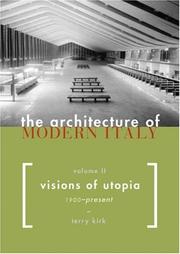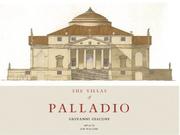| Listing 1 - 10 of 11 | << page >> |
Sort by
|
Book
ISBN: 3034600607 9786612981227 3034604416 1282981226 Year: 2010 Publisher: Basel : Birkhäuser,
Abstract | Keywords | Export | Availability | Bookmark
 Loading...
Loading...Choose an application
- Reference Manager
- EndNote
- RefWorks (Direct export to RefWorks)
Design -- Austria. --- Design -- Germany. --- Design -- Switzerland. --- Designers. --- Drawing, Design & Illustration --- Visual Arts --- Art, Architecture & Applied Arts --- Graphic artists --- Designers, Graphic --- Graphic designers --- Artists
Book
ISBN: 3936560420 Year: 2006 Publisher: Berlin : Birkhäuser,
Abstract | Keywords | Export | Availability | Bookmark
 Loading...
Loading...Choose an application
- Reference Manager
- EndNote
- RefWorks (Direct export to RefWorks)
Since 1998 the bilingual Designer Profile has been the authoritative work on the design scene in Germany, Austria and Switzerland. Every two years it enables designers from the fields of industrial, exhibition, graphic and multimedia design to present their ideas, concepts and successes. These volumes form an indispensable reference work for management decision-makers and agencies who need speedy and targeted information on the spectrum of activities provided by potential designer partners.
Design --- Design --- Design Austria.
Periodical
Year: 2008 Publisher: New York Princeton Architectural Press
Abstract | Keywords | Export | Availability | Bookmark
 Loading...
Loading...Choose an application
- Reference Manager
- EndNote
- RefWorks (Direct export to RefWorks)

Abstract | Keywords | Export | Availability | Bookmark
 Loading...
Loading...Choose an application
- Reference Manager
- EndNote
- RefWorks (Direct export to RefWorks)
Architecture --- Italy --- Architecture [Modern ]

ISBN: 1568983964 Year: 2003
Abstract | Keywords | Export | Availability | Bookmark
 Loading...
Loading...Choose an application
- Reference Manager
- EndNote
- RefWorks (Direct export to RefWorks)
Book
ISBN: 9781568988320 Year: 2009 Publisher: New York Princeton Architectural Press
Abstract | Keywords | Export | Availability | Bookmark
 Loading...
Loading...Choose an application
- Reference Manager
- EndNote
- RefWorks (Direct export to RefWorks)

ISBN: 1568984138 Year: 2004
Abstract | Keywords | Export | Availability | Bookmark
 Loading...
Loading...Choose an application
- Reference Manager
- EndNote
- RefWorks (Direct export to RefWorks)
Many think that sub-Saharan African architecture is little more than mud huts. Mud, yes--but certainly not huts. Instead, these adobe buildings, many of them enormous, show sublime sculptural beauty, variety, ingenuity, and originality. In the Sahal region of western Africa--Mali, Niger, Nigeria, Togo, Benin, Ghana, and Burkina Faso--people have been constructing earthen buildings for centuries. But they remain unknown to most of the Western world. Their plastic forms--from simple stairways, to ornamented domes, to complex arches--are highlighted by subtle painting and intricate grillwork. James Morris spent four months photographing these hidden jewels, from the great mosque at Djenne--the largest mud building in the world--to small houses in remote animist communities. 'Butabu' shows these works as both aesthetic treasures and as architecture with contemporary relevance. These are no museum pieces, but rather buildings that continue to be maintained and built, even as they are threatened by the uncertainties of weather and the encroachment of Western technology. Text by Suzanne Preston Blier covers the history of earthen architecture, the technology that creates it, and the symbolism of its form.
Architecture --- Building, Adobe --- Africa [West ] --- Building [Adobe ] --- Construction en adobe

ISBN: 1568982445 Year: 2001 Publisher: New York Princeton Architectural Press
Abstract | Keywords | Export | Availability | Bookmark
 Loading...
Loading...Choose an application
- Reference Manager
- EndNote
- RefWorks (Direct export to RefWorks)
Art deco (Architecture) --- Skyscrapers --- AIG Building (New York, N.Y.) --- 40 Wall Street (New York, N.Y.) --- One Wall Street (New York, N.Y. : 1931- ) --- 20 Exchange Place (New York, N.Y.) --- Wall Street (New York, N.Y.) --- New York (N.Y.) --- History --- Buildings, structures, etc. --- AIG Building (New York, N.Y.). --- 40 Wall Street (New York, N.Y.). --- One Wall Street (New York, N.Y. : 1931- ). --- 20 Exchange Place (New York, N.Y.). --- New York (State) --- AIG Building (New York, NY) --- One Wall Street (New York, N.Y.: 1931-) --- 20th century
Book
ISBN: 1281141739 9786611141738 1568986564 Year: 2005 Publisher: New York, NY : Princeton Archit.Press : Imprint: Princeton Architectural Press,
Abstract | Keywords | Export | Availability | Bookmark
 Loading...
Loading...Choose an application
- Reference Manager
- EndNote
- RefWorks (Direct export to RefWorks)
Stan Allen Architect; Dean of the School of Architecture, Princeton University The title of this year’s Young Architects competition derives from the language of the computer program. “If. . . then” is the contingent phrase built into the architecture of programming. With its origins in mathematical reasoning, it is the logical gate that indicates distinct pathways through the intricate structure of the computer algorithm. As such, it signals that architecture is entering a new phase in its complex relationship to digital technology. The definitive history of architecture’s relationship to the computer has yet to be written, but it would necessarily start with technology transferred from the military and engineering disciplines in the immediate postwar period. In recent decades, as the computer’s impact has shifted from the purely te- nical, it is possible to discern three distinct phases in architecture’s ongoing efforts to come to terms with what is still an evolving technology. In the first stage, under the influence of cyberpunk and deconstruction, the engagement with digital technology was primarily metaphorical. As access to the Internet expanded in the 1980s, many architects were fascinated by the potential of networked interconnectivity and fluid personal identity promised by this em- gent technology. The problem was that in reality available computer techno- gies were slow and expensive.

ISBN: 9781568986067 1568986068 Year: 2006 Publisher: New York Princeton Architectural Press
Abstract | Keywords | Export | Availability | Bookmark
 Loading...
Loading...Choose an application
- Reference Manager
- EndNote
- RefWorks (Direct export to RefWorks)
| Listing 1 - 10 of 11 | << page >> |
Sort by
|

 Search
Search Feedback
Feedback About UniCat
About UniCat  Help
Help News
News